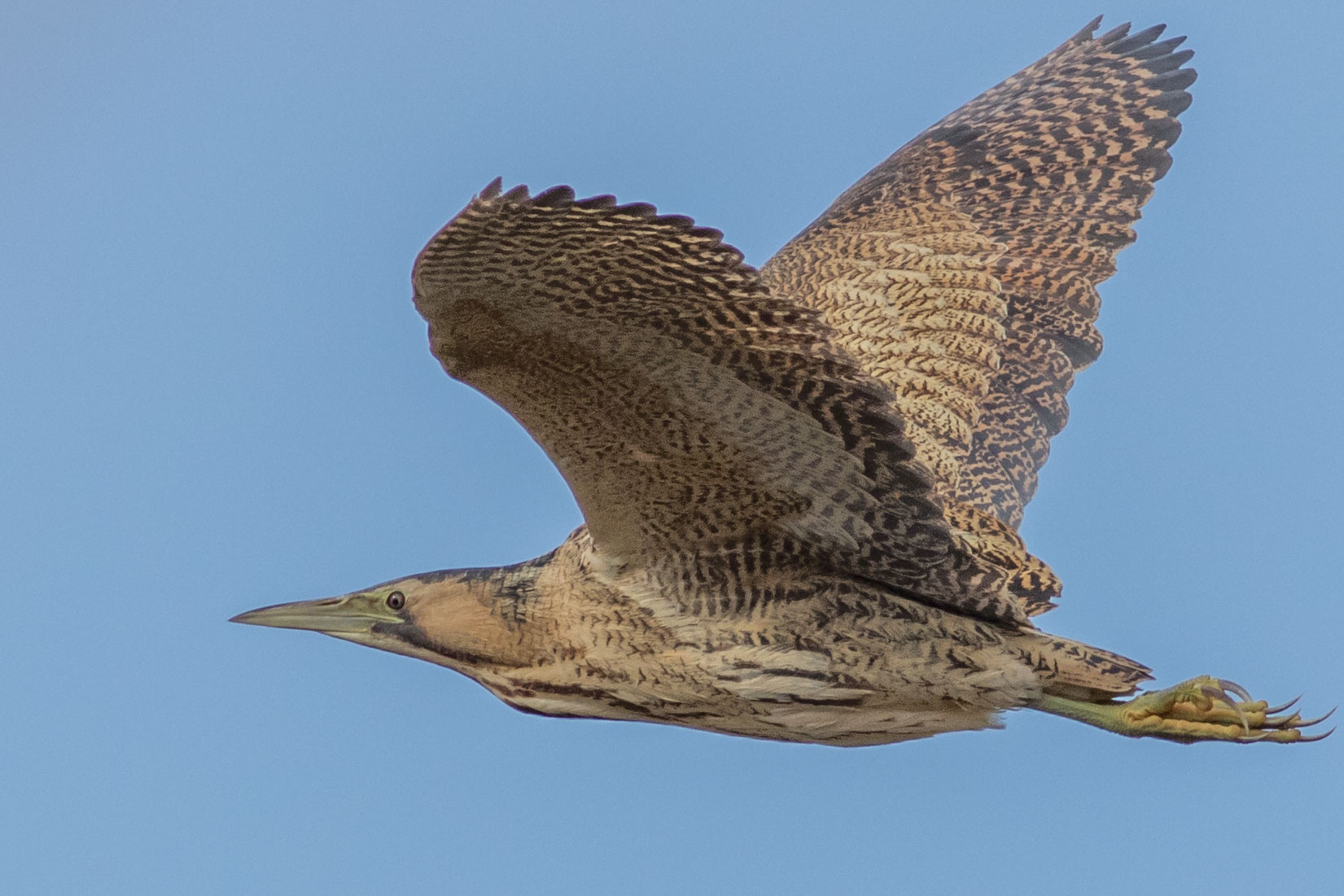Bitterns reach new heights
Britain hosted a record number of booming Bitterns in summer 2017, a new survey has revealed.
Bittern is Britain's loudest bird, yet also one of its most secretive, and is best counted by listening for the male's foghorn-like 'booming' call, which is uttered in the spring and summer as they advertise for a mate.
Numbers of booming males increased to at least 164 at 71 sites in 2017. That compares to 162 at 78 sites in 2016, and is a positive sign that Bitterns are still coming back from the brink and beginning to thrive.

Bittern, Northumberland (John Atkinson).
The annual monitoring is organised by the RSPB, which found that the number of booming males in Somerset increased by two, from 47 to 49, although there was a slight drop this year in the core areas of eastern England, such as the Suffolk coast, Norfolk Broads and The Fens. Booming was also reported from three new sites, and there was an increase in Wales this year.
Bitterns were considered lost as a breeding species in Britain by the 1870s. Following recolonisation early in the 20th century, numbers of the species increased to a peak of about 80 booming males in the 1950s, but then fell to fewer than 20 in the 1990s, though similar declines were witnessed in many other countries in western Europe. By 1997, there were only 11 booming males in Britain. These were mainly within Norfolk and Suffolk, with a small outlying population at Leighton Moss, Lancashire.
Simon Wotton, Senior Conservation Scientist at the RSPB, said: "In the late 1990s, the Bittern was heading towards extinction once again in the UK. But, thanks to conservation efforts to restore and create its preferred habitat of wet reedbed, it was saved and we're delighted to see another record year for this amazing bird."
A raft of legal protections combined with funding from two EU LIFE projects have been vital in aiding the recovery of Bittern. The RSPB has made it clear that it is important that the levels of protection afforded to species such as Bittern are maintained, or ideally enhanced, following our exit from the EU. Almost half of Britain's breeding Bittern population occurs within Special Protection Areas (SPAs), however more than half of our still vulnerable population occurs at sites which currently have no protection, including many of those sites created through conservation projects. To ensure the Britain's Bittern population continues to recover, the RSPB has emphasised the need to continue the progress made to complete a robust and well-managed network of protected sites.

